
‘In his essay “La Terra Nuova,” Robert Beavers elucidates a paradoxical principle that has informed his filmmaking from the earliest days of his career: “Like the roots of a plant reaching down into the ground, filming remains hidden within a complex act, neither to be observed by the spectator nor even completely seen by the filmmaker. It is an act that begins in the filmmaker’s eyes and is formed by his gestures in relation to the camera.” While the act of filming is distinguished from painting, say, by the mediating apparatus of the camera, filmmaking is nevertheless inexorably tied to the artist’s hand. In Beavers’s description, the recording device translates interior vision into image by a direct physical action.
‘The comparison of film with painting provides an insight into Beavers’s profoundly physical understanding of his medium, which is underscored by his unorthodox editing methods. Working without an editing table, he cuts his films manually with a splicer. “I memorize the image and movement while holding the film original in hand. . . . There should be almost no need to view the film projected until the editing is completed,” he wrote in “Editing and the Unseen.” The near-complete execution of the entire production process by a single maker has always been a marker of avant-garde film. However, Beavers’s approach goes beyond that of standard noncommercial filmmaking, and for the past forty years he has maintained strict control over the production, exhibition, and preservation of his films, which has resulted in one of the most distinctive—and yet underrecognized—bodies of work in cinema.
‘Born and raised in Massachusetts, Beavers attended Deerfield Academy. In the summer of 1965, at the age of sixteen, he went to New York to do research for a proposed film club at school. In the foyer of the Film-Makers’ Cinematheque (then at the Astor Place Playhouse), he encountered avant-garde film luminary Gregory J. Markopoulos, who went on to play a major role in his life. Shortly afterward, he dropped out of high school and moved to Manhattan to pursue filmmaking.
‘In 1966 Beavers completed his first film, Spiracle, shot in and near a loft on the Bowery where he lived. After two years of working odd jobs, including printing 16 mm film in a lab, he left for Europe in February 1967. Markopoulos, who had become his partner, followed him soon thereafter. The two filmmakers spent the next twenty-five years living and traveling in Switzerland, Greece, Italy, Austria, Belgium, and Germany, tirelessly plying their art, often working under great financial constraints.
‘Having extracted himself from the New York avant-garde film community before he had established a career, Beavers’s work became almost entirely inaccessible between 1974 and 1996, as he declined all public screenings in the US. Instead, he and Markopoulos worked on the realization of the Temenos (Greek for “a piece of land set apart” or “sacred grove”), the elder artist’s vision of an outdoor viewing site and archive devoted exclusively to their writings and films. From 1980 through 1986, the filmmakers held annual screenings in a rural spot near the village of Lyssaraia on the Peloponnese, and these became the only way to see their work. (The tradition was revived last year, when Beavers presented a part of Markopoulos’s late work in the same location for three days in June.
‘From his earliest to his most recent films, Beavers has combined an exacting formal examination of camera movement and framing with richly filmed depictions of people and places encountered in his nomadic life. The structure of his films—including visual rhymes, repetitions, and equivalences—is akin to that of poetry. In Diminished Frame, for example, made in Berlin in 1970, he used a variety of mattes to partially mask the frame in each shot: A black rectangle obscures the view from an elevated-train stop or blots out a group of boys posing in front of the camera on their bikes. In Work Done (1972/1999), which uses colored filters to luminous effect, Beavers constructs a series of metonymic shots—intercutting the image of a block of ice with that of a river, or the felling of a tree with a book being bound.
‘At the beginning of his career, Beavers often made reference in his films to his own artistic process and to the material conditions of filmmaking, inserting shots of himself, the camera, or his editing table. From the Notebook of . . . (1971/1998), inspired by the notebooks of Leonardo da Vinci and an 1895 Paul Valéry essay on da Vinci’s methods, examines Beavers’s own mode of working, juxtaposing shots of pages noting ideas for filming with views from his hotel window in Florence.
‘In his later work, he shifts away from a formal investigation of the filmmaking apparatus toward precisely structured relationships between objects and entities. In AMOR (1980), he sets the recurring motifs of cutting and sewing cloth into a metaphorical relationship with romantic love, and in The Ground (1993–2001) the work of a stonemason is paralleled with the ruins of a tower on the Greek island of Hydra.
‘His recent film, The Hedge Theater (1986–90/2002)—combining footage from two earlier projects on the architecture of Borromini and the fifteenth-century Sienese painter Il Sassetta—marks the completion of a cycle titled My Hand Outstretched to the Winged Distance and Sightless Measure. Beavers began to rework almost all of his films in the late ’80s, a project that would eventually take him more than a decade. The final versions are typically shorter, and they have acquired newly recorded and edited sound tracks.’ — Chrissie Iles
___
Stills
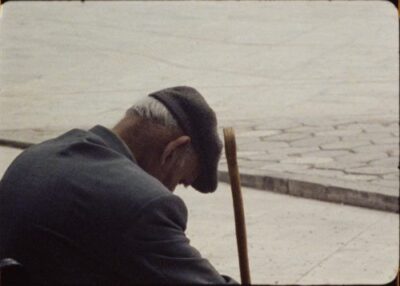

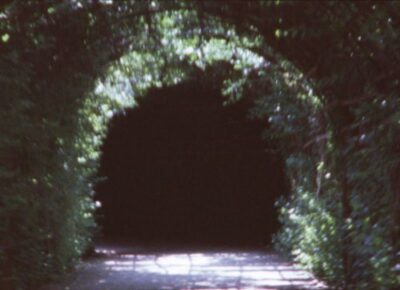


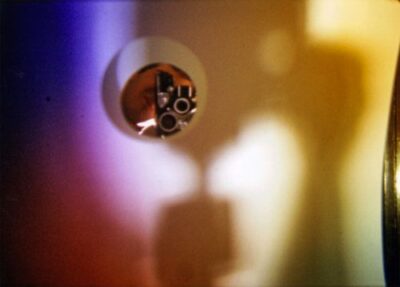

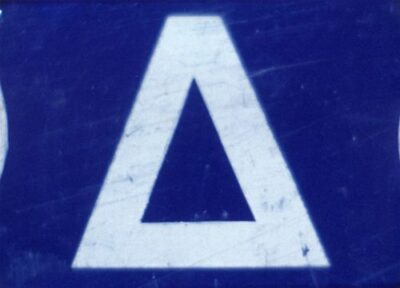

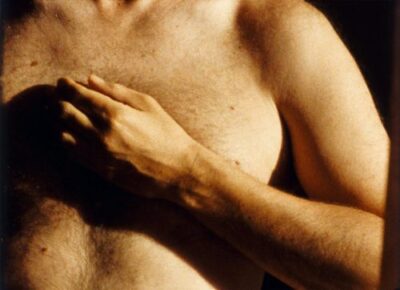

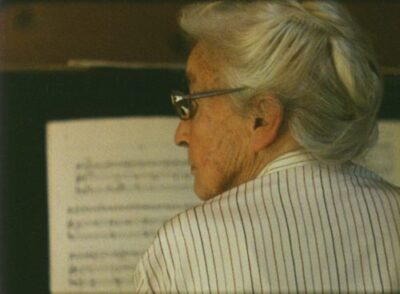
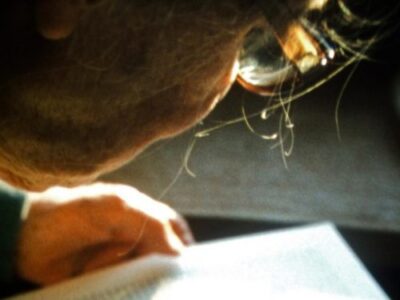
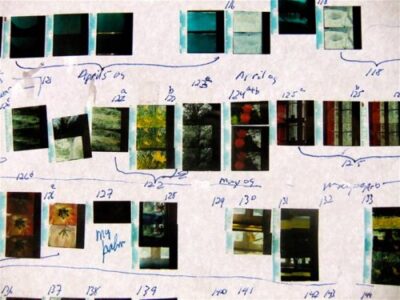

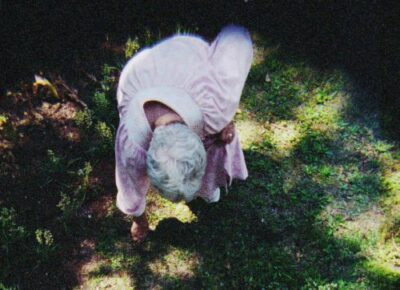
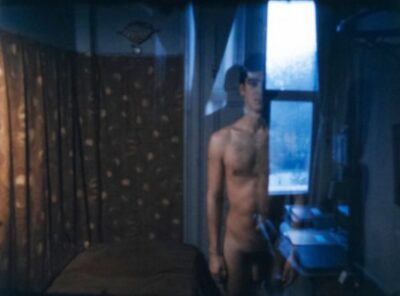

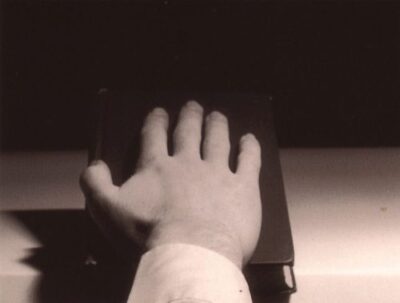
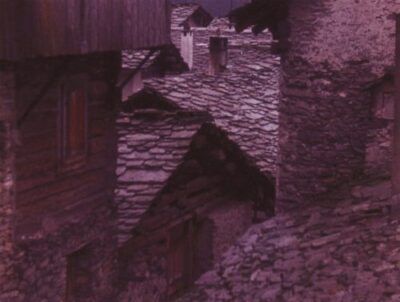

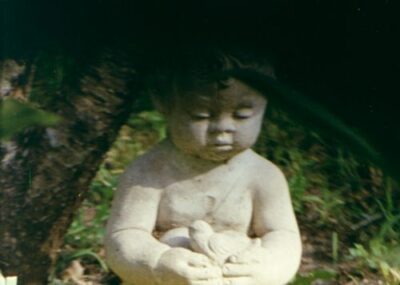

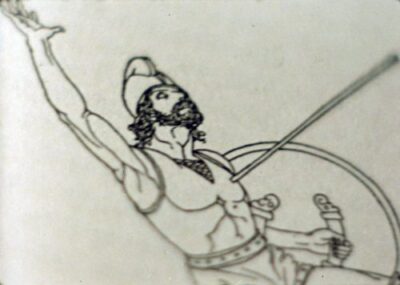

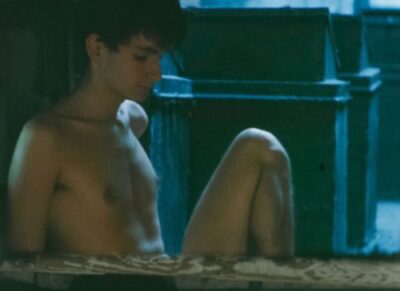

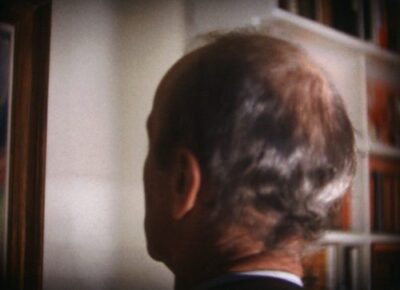
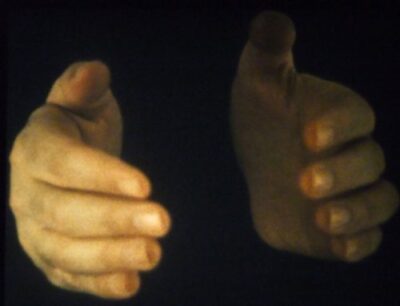
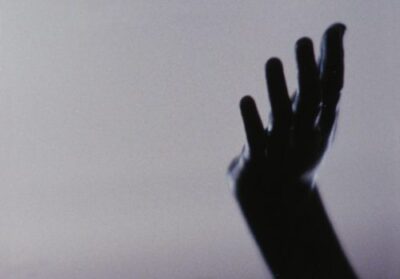
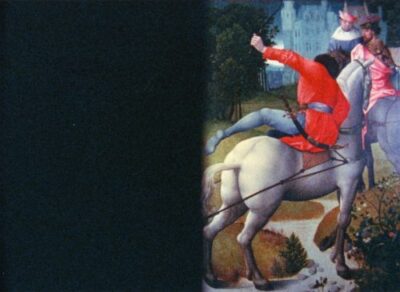

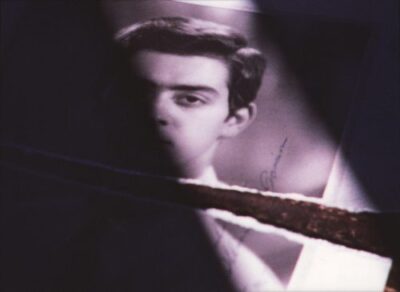
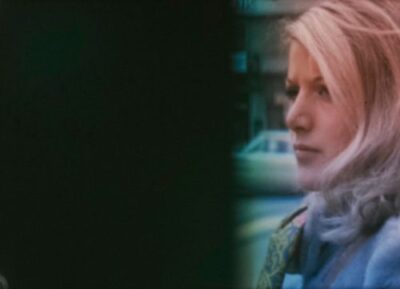
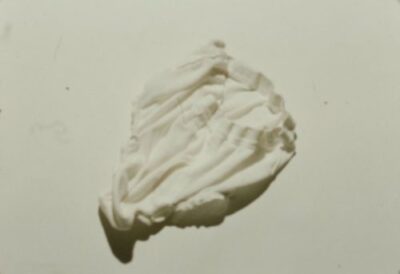

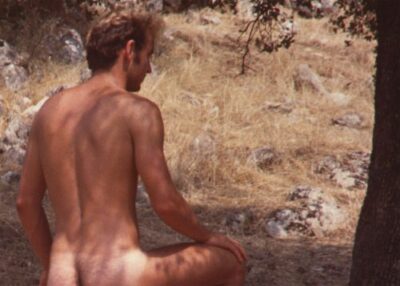
___
Further
Robert Beavers Website
Robert Beavers @ IMDb
RB @ MUBI
RB @ ERNA HECEY GALLERY
Book: ‘Robert Beavers’
An Interview with Robert Beavers
RB @ Letterboxd
Majestic Images
‘There is no fear of isolation while the filmmaking continues’
Book: ‘Robert Beavers. Still Light. Film Notes & Plates’
You likely haven’t seen Robert Beavers’ legendary films
‘Listening to the Space in my Room’
AVANT-GARDE CINEMA—A Robert Beavers Online Reader
WINGED DISTANCE / SIGHTLESS MEASURE: A Conversation with Robert Beavers
A CONVERSATION BETWEEN UTE AURAND AND ROBERT BEAVERS
Robert Beavers Heads to Remote Area of Greece
_____
Extras
Robert Beavers, LA Filmforum October 24, 2018
Gregory Markopoulos & Robert Beavers in 1987
SPECIAL // Zu Gast: Robert Beavers
______
Interview
from Artforum

HENRIETTE HULDISCH: You made your first film when you were only sixteen. How did you come to be a filmmaker at such a young age?
ROBERT BEAVERS: That was in 1965, before most universities opened their doors to filmmaking. I had never been particularly drawn to photography, so I wasn’t coming from that direction. What a filmmaker does is quite different from making a still image. The fascination was with the projected image, its rhythm and luminosity.
My interest came in early adolescence, when many people of my generation discovered film in a sense other than they had known in their childhood. It was part of a general development and broadening out from my family background, connected to a wider range of reading, going to galleries, and seeing foreign films for the first time. All that was accessible in the Boston area.
I began as a spectator and went briefly through an intermediary stage of wanting to organize projections and programs for a film club. Then quite quickly and dramatically, I jumped into this New York context of ’65, ’66, where I found the opportunity to handle a camera and edit film at a time when 16 mm was still inexpensive.
It was a general development towards personal cinema, and then the specific context of the Film-Makers’ Cinematheque, the Cooperative, Film Culture, and the Friends of New Cinema that Gregory Markopoulos introduced me to.
HH: When you moved to New York, the New American Cinema was burgeoning. What filmmakers did you have contact with other than Markopoulos, whom you met in 1965?
RB: It had reached a certain momentum and was sustaining some extraordinary developments. A new audience and a circle of supporters for the filmmakers’ work were expanding. It was fed by a general dissatisfaction with commercially produced film, or art in general. I saw the dedication of the filmmakers who had started in the late ’40s, early ’50s, and who had struggled through a difficult period in the US, when there was no acceptance of their work. I remember the shock of meeting Harry Smith, but also the inspiration of seeing his Early Abstractions [1946–57], and I was enthusiastic about Kenneth Anger’s Inauguration of the Pleasure Dome [1954–66], Stan Brakhage’s Sirius Remembered [1959], and the films of Ron Rice. But Gregory was the only one to give practical encouragement and an example, then Jonas [Mekas]. And Ken Jacobs offered film equipment through the newly created Millennium Film Workshop.
We adolescents of the mid-’60s were coming into direct contact with filmmakers who had not only survived but achieved results that are, in my opinion, still important for film in general and particularly in the American social context, where work made outside the commercial entertainment industry demands great commitment and genius of some sort to sustain it. This circumstance has its advantages and disadvantages. For the New York filmmakers, it imposed a rigorous economy of means. Those who were dedicated to what they were doing found the means to produce what they wanted, and seeing this gave me courage. It was a special moment, I felt. I was sixteen, so it’s always a special moment. [Laughs.]
HH: We’re sitting in your temporary editing room in Berlin where you’re working on a new film. But before we get to the editing process, I want to ask you how a project develops.
RB: I like to call the notes that I write an “instrument for productive waiting.” I have some sheets of paper, a notebook. The first notes I enter are often related to whatever film I had completed recently, and gradually elements for a new film begin to appear. Then I see how these scattered intentions come together, how they grow. What is constant—relatively constant—is a vital relation to space. It takes different forms with each film, but underlying the different themes is this constant relation to space. That’s one animating source in my filmmaking, what inspires me to make films.
In AMOR, for instance, my point of departure was with the space of a dome. And even though there is no image of a dome in the film, the stimulus that I obtained from my response to this particular space, a cupola, informed the way I made the film. I don’t have to show it to draw a sense from it. In The Stoas it was the idea of the space within a vase that motivated me, but finally we do not see vases in the film; there are only my hands in an “empty” space.
HH: By this do you mean not just your visual sense of space but also a mental space that you work through?
RB: Yes, rhythm and the elements of film—light, composition within the frame, and so on—underneath which is this sense of space, this sense related to touch. That’s the starting point. It’s not true of all the films, but it’s true of a number of them. Alongside this reaching out is a desire to find life in the elements of filmmaking itself, even in the very apparatus of the camera.
HH: I assume you’re referring to your use of mattes and filters in films like The Count of Days, Palinode, and Diminished Frame.
RB: In the Bolex camera, there is a filter slot in which I decided to place strips of pure color. This is a very particular area I was using at that time—the space in front of the lens and the space between the lens and the aperture. Another means has been the turning of the lens on the camera’s turret while filming or positioning the lens so that its curve is visible in the frame. It allows for a sense of sight to be reflected back and to show itself.
HH: You’ve said that From the Notebook of . . . is a kind of culmination of your early work. It’s one of your longest films, inspired by Leonardo’s notebooks and a text by Paul Valéry, which you use as a jumping-off point to investigate not only the filmmaking apparatus but also your artistic process in relation to your writing.
RB: I began with the idea that there would be a relation to Leonardo, but I had no intention of making a biographical film. I used Leonardo to lead to certain locations in Florence. The opening scene, with the doves being released in the square, came from a biographical anecdote: Da Vinci would buy caged doves to set them free. The scene led me to compare this movement of the doves’ wings to the opening of the window shutters in my room and to the turning of the pages in my notebook because all can be compared to the movement of the camera’s shutter. Then the vortex of water in the Arno was chosen because of Leonardo’s extraordinary drawings of deluges. I just chose a few points and then I made a leap away from his notes to my own. All of the texts seen in the film are notes for my early films, except for one about pyramids of sight, which is a direct quote from Leonardo’s notes. Everything else has to do with my filming in the room where I was living and other locations in Florence.
HH: You recently completed an overarching film cycle titled My Hand Outstretched to the Winged Distance and Sightless Measure, which comprises all sixteen of your films from 1967 through 2002, ending with The Hedge Theater. We’ve spoken about how your films germinate over a long period of time and that you return to certain ideas, images, and themes again and again. How does that play out in individual films and in the cycle as a whole?
RB: I think of them as a connected work but see three groupings within that larger structure: the first five early films after Spiracle; the four middle films beginning with From the Notebook of . . . ; then the last seven films beginning with Sotiros. These divisions are the result of certain decisive turns in my filmmaking, and I think of both From the Notebook of . . . and Sotiros in such terms. Within the entire body of films, there are constant elements that are developed and become more or less prominent in a particular film. For instance, in the film that I’m editing now, I was interested in emphasizing a subjective sense of darkness, and so I have edited it using darkness in a different way than I have in other films, yet it can be seen as equal to the movement of light and shadow in Sotiros.
HH: The current project, shot in your mother’s house in Massachusetts, will be your first film since completing the cycle and your first in some years made up entirely of new footage.
RB: It’s actually one of three new films that I have been working on, and it’s the one nearest to completion. But there is also a film of a statue, and then recent filming in Greece.
HH: Perhaps now you could describe your approach to editing.
RB: Editing has to do with memory to a great extent. I look at all of the footage, both projected and on a Steenbeck table, then I separate every shot by hand and wind it in a coil. So there’s a sense, even in just winding each image, of memorizing what is in it. In the time that this takes, I’m also composing the film. Someone asked me, “What equipment do you use?” and I said, “I use my eyes and my head.” That’s it, plus rewinds and a splicer. Although lately I have been checking what I’m doing, since I happen to have access to an editing table, and sometimes I even project it—a little bit more than I used to. It is very strenuous on the eyes (and on the head) to edit the way I do it.
HH: As opposed to having the picture to look at on the larger screen?
RB: Yes, but I still hold to what I wrote in one of my small texts—that it’s an illusion to think that seeing the image is necessary for editing a film. Of course you have to see it, but this constant viewing on the editing table can be distracting, because you lose a larger, overall sense of composing the film, and that’s more important. It’s important to keep your memory of each shot and work with this in composing the larger unit of the film. That’s the “intuitive space” of the editing, and if you are constantly looking at either the projected image or the editing-table image, it can create a fatigue which is—well, it’s a fatigue that takes you away from developing the film.
HH: I love your use of the word “composing,” with its implicit analogy to musical composition, which is comparable in that you write notes on a sheet of paper but don’t hear what you’re doing. It sounds in many ways like working with the coils of film and seeing small frames but not seeing the animated, moving image nor seeing the film in sequence, that—
RB: Excuse me for interrupting, but in seeing the frames, the still frames of the filmstrip, you have a distance from the image, but you also have a very precise and physical relation to it, because you are actually seeing frames.
HH: You’ve cited Sotiros as a key work in your development. In what sense did it signal a new phase in your practice?
RB: The turn from Ruskin to Sotiros is that, in the latter, there’s no outside source that I draw on. In From the Notebook of . . . , there is the indirect relation to Leonardo, and in Ruskin there’s obviously the rapport with Ruskin’s writings on architecture. In Sotiros, on the other hand, there is this search for the voice of the film itself, a lyric voice, not something separate from the vital elements of film. So I have human figures in the films, and incidents. But I wanted the whole film to be the voice. In other words, it’s not a dramatic film. I don’t want the figure to guide the viewer; I want the spectator to have a more direct relation to the image and sound.
HH: There is a sense in which your films are a kind of portrait of a certain moment, of being in a particular place at a particular time.
RB: Of course. But it’s strange—I don’t think of myself as peripatetic, even though I am an extreme case of it, I guess. I feel that I’ve stayed within a relatively limited number of locations, and I travel less now than I did in the past.
HH: Still, between 1967, when you left for Europe, and the early ’90s, when you more or less settled in Zurich, you were in a state of constant movement. You didn’t maintain a permanent address, and during certain periods you and Gregory were moving every few weeks—perhaps among a limited number of locations, but there was a lot of movement nonetheless. How has that informed your filmmaking?
RB: It was good. The travel had a direction, and the direction was the work—not the other way around. I don’t think that I was fleeing or avoiding something. I was going toward something. That’s the problem with words like “expatriate.” The “ex” is the problem. It has this connotation of fleeing, and in reality one is going toward the filmmaking. We chose to go somewhere in hopes that we would find a location that would be good for a new film, inspiration for a new film, support for a new film—funding, but not only.
HH: In an article about the 1999 New York Film Festival, the critic Amy Taubin suggested that “avant-garde filmmaking continues to have validity [only insofar as] it has at its center an individual artist working autonomously.” Which leads me to the Temenos and the fact that you have taken the control of your films much further than any other living filmmaker and extended it to the circumstances of presentation as well as to preservation.
RB: We don’t have time here to analyze the history and the present situation of this filmmaking, but that history is central to the decisions made in creating the Temenos. It is both an ideal and a reaction to concrete circumstances. One was the great lack, especially in the early ’70s when Gregory first began speaking of the Temenos, of a sincere commitment to preserving the kind of films we make. Basically, the national cinematheques—like the National Film Archive in London, the Cinémathèque Française, or the Museum of Modern Art, which functions like a national cinematheque—do not hold the preservation of our kind of filmmaking as a priority. It’s necessary to have committed, even fanatical, small institutions that place this work as a first priority. So the Temenos is an example of a monographic archive—something that exists for certain painters or musicians but not for filmmakers. The Temenos itself is the collection of films, the archive, the restoration work, and the presentations. Then there are the associations that I’ve created in Zurich and New York, which support this effort.
So now there is a history, and it’s certainly limited, only a beginning. Some of our films are being restored and preserved, a certain amount is being shown and new work is being premiered at the Temenos site near Lyssaraia on the Peloponnese. It will also be shown elsewhere when the correct context can be developed.
HH: Avant-garde film has by definition been marginal opposite commercial filmmaking, but it has also had very limited presence in the gallery or art-museum context. Lately, however, we’ve seen more and more work that used to be classically presented in the cinema space instead appear in a gallery situation—and I don’t mean work by artists who have always produced in that context, but the presentation of experimental filmmakers in the gallery. I am curious whether this is something that you could imagine for your own work.
RB: It depends on the kind of individuals who show enthusiasm for the films and whether their intention is to champion it and make a serious commitment over a longer period. I’ve thought that we need courageous and clever exhibitor-publishers who might create new ways of presenting the films—an Alfred Stieglitz or a Daniel-Henry Kahnweiler for film. They helped to create a vision of the entire scope of work and brought it to the public. On the other hand, there may also be reason for caution. There is an advantage when filmmakers create their own audience.
HH: Not everything can be presented continuously in a gallery, and not everything works in a cinema space beginning to end. Those are two very different ways of looking at film, and people aren’t always as sensitive to the different contexts as they could be.
RB: My films would not fit into the places where most films are seen, and they may not fit into art galleries either. I don’t complain of this any more than I would complain that there isn’t a proper name for this filmmaking. I only call it “my films.” I don’t think of them either as “experimental” or “avant-garde,” and most other serious filmmakers also would not.
This is where the activity of the Temenos archive and association is important—the building of the audience is a constant activity. The fact that we continued our filmmaking is also the base from which the other activities grew. In a way, there was no choice but to create the archive and the film presentations. The supporters and friends, both spectators and other filmmakers in Europe and America, are an equal part of this. The most recent example was the screenings in 2004 in Lyssaraia, and this direction has little to do with finding a place within the existing forms of distribution and exhibition.
HH: Such as the gallery or the cinema space?
RB: And even film festivals. Most major film festivals as they exist now give a small window to truly original work in film. They try to be generous, but I find this is a compromised generosity. The museum could play a vital role in preserving and presenting a specific body of work. Aesthetic choices need to be made, and museums collecting film should not follow the cinematheque model, which was a progressive model in relation to the film industry when the cinematheques first began in the ’30s. Museums should not be involved in preserving “the phenomena of film” outside of an aesthetic criterion. Cinematheques have a different responsibility. They are like a library, trying to preserve all of film, or as much as they can. That’s a great objective. But I think museums should preserve the excellence of the visual image. I hope that more institutions dedicate themselves to this.
HH: Do you feel that founding a single-person archive and preservation facility like the Temenos really is a viable alternative to the more established routes of film preservation? Given the sometimes dramatically limited resources that truly independent filmmakers labor under—the lack of funding versus cost of materials and equipment—it seems like a very difficult and time-consuming project, as you yourself have said, to be in charge of the entirety of making and preserving. Shouldn’t, rather, institutions like art museums and film archives more deliberately support this kind of filmmaking that has few other stewards?
RB: I don’t think there’s a conflict between the two. What I am able to do could be a stimulus for larger institutions to do more now and in the future. I can only work with what is now possible and then place it in other people’s hands. And I am not really alone in this work; there is the lab, friends, and patrons. But this circumstance, where a filmmaker has managed to keep his work together, is already unusual. The unity that exists between how the films are made, how the archive is developed, and how the films are presented is exceptional. We need to ensure its chance for the future, and it takes intelligent and generous individuals to help accomplish this.
I would like to make an even more basic point and say that the goal is for the projected film image to have the same force of awakening sight as any other great image. How that’s accomplished may not matter so much. What matters is the awakening of sight. And in film, this is rare. It’s rare in any visual medium. Nothing counts more than this gift.
_____________
11 of Robert Beavers’ 25 films
_____________
Early Monthly Segments, 1968-70
‘Early Monthly Segments, filmed when Beavers was 18 and 19 years old, now forms the opening to his film cycle, “My Hand Outstretched to the Winged Distance and Sightless Measure.” It is a highly stylized work of self-portraiture, depicting filmmaker and companion Gregory J. Markopoulos in their Swiss apartment. The film functions as a diary, capturing aspects of home life with precise attention to detail, documenting the familiar with great love and transforming objects and ordinary personal effects into a highly charged work of homoeroticism.’ — Susan Oxtoby
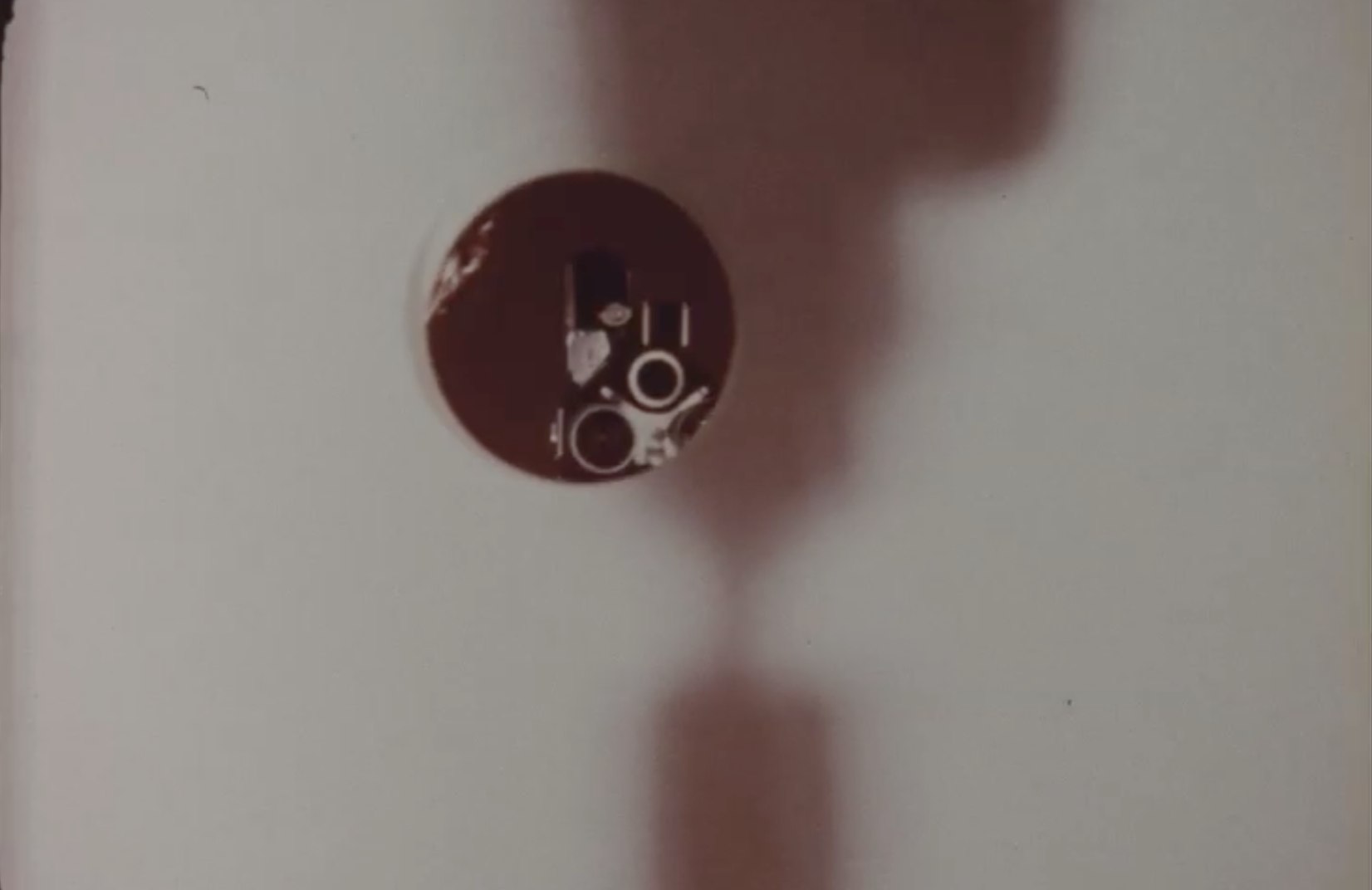
_____________
From the Notebook of …, 1971/1998
‘From the Notebook of … was shot in Florence and takes as its point of departure Leanardo da Vinci’s notebooks and Paul Valéry’s essay on da Vinci’s process. These two elements suggest an implicit comparison between the treatment of space in Renaissance art and the moving image. The film marks a critical development in the artist’s work in that he repeatedly employs a series of rapid pans and upward tilts along the city’s buildings or facades, often integrating glimpses of his own face. As Beavers notes in his writing on the film, the camera movements are tied to the filmmakers’ presence and suggests his investigative gaze.’ — Henriette Huldisch
the entirety
____________
Work done, 1972/1999
‘Bracing in its simplicity, Work done was shot in Florence and the Alps, and celebrates an archaic Europe. Contemplating a stone vault cooled by blocks of ice or handstiching of a massive tome or the frying of a local delicacy, Beavers considers human activities without dwelling on human protagonists. Like many of Beavers’ films, Work done is based on a series of textural transformative equivalences: the workshop and the field, the book and the forest, the mound of cobblestones and a distant mountain.’ — J. Hoberman
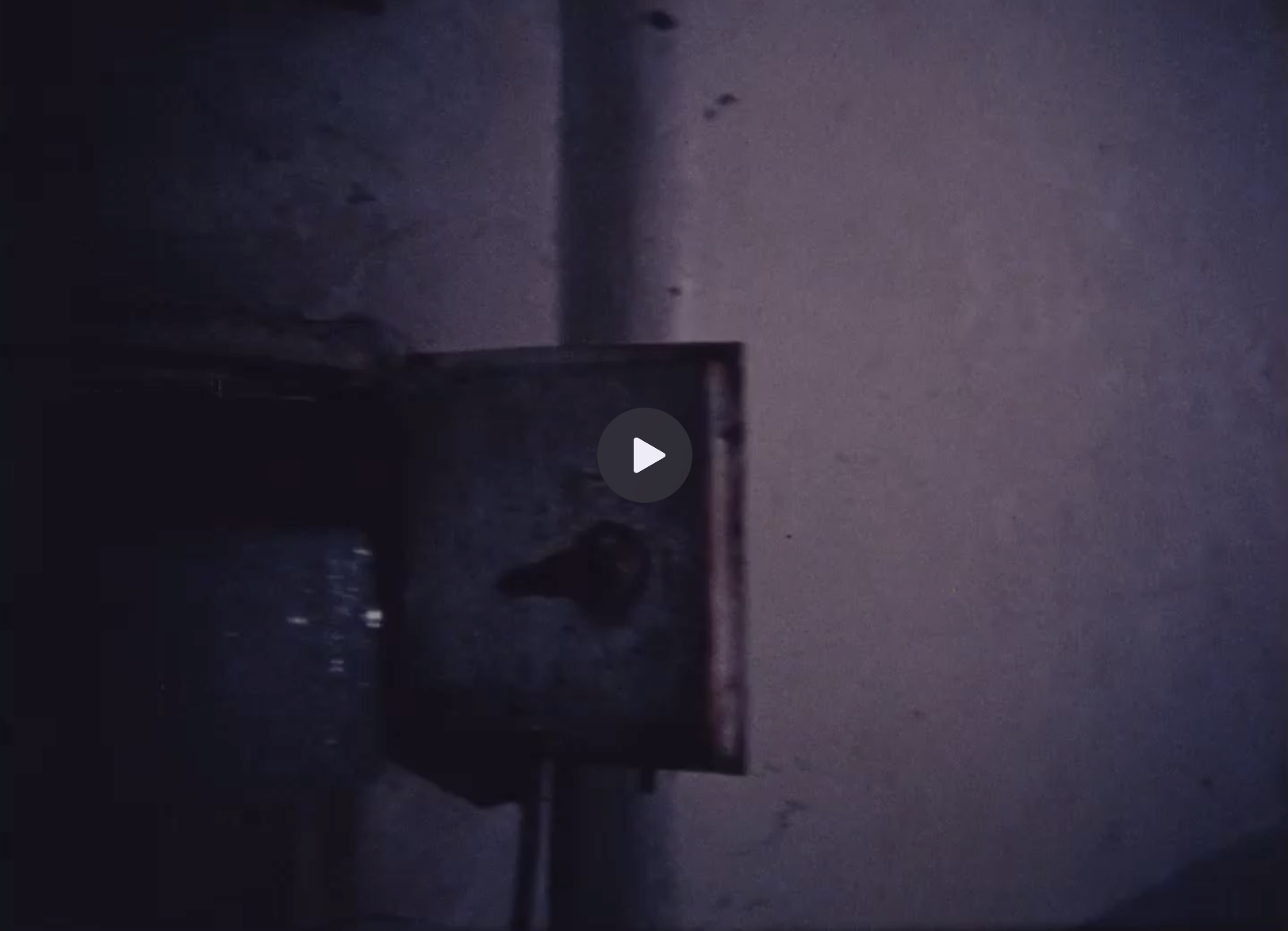
_________
Ruskin, 1975/1997
‘Ruskin visits the sites of John Ruskin’s work: London, the Alps and, above all, Venice, where the camera’s attention to masonry and the interaction of architecture and water mimics the author’s descriptive analysis of the “stones” of the city. The sound of pages turning and the image of a book, Ruskin’s ‘Unto This Last’, forcibly reminds us that a poet’s perceptions and in this case his political economy, are preserved and reawakened through acts of reading and writing.’ — P. Adams Sitney
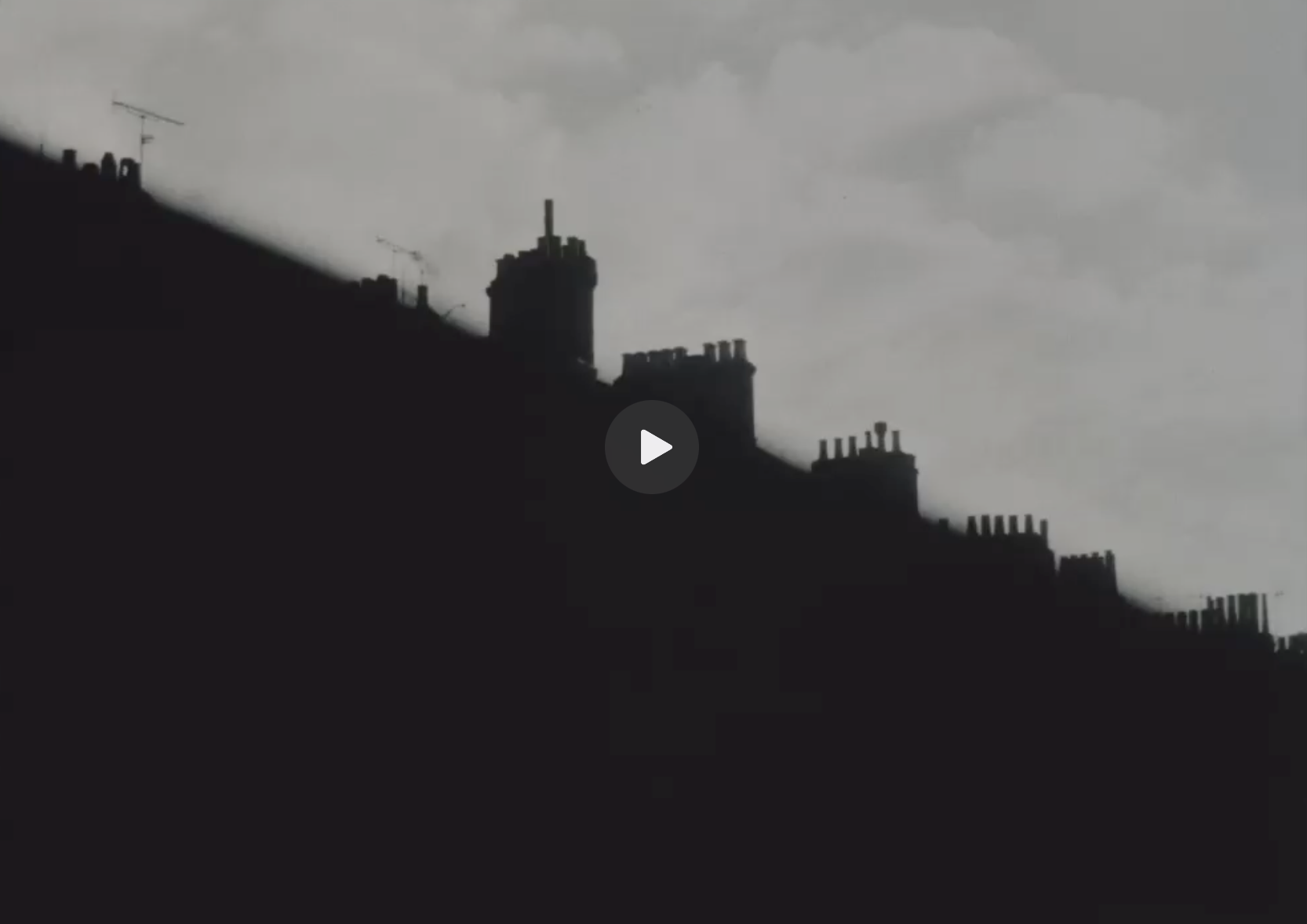
___________
Sotiros, 1976-78
‘In Sotiros, there is an unspoken dialogue and a seen dialogue, The latter is held between the intertitles and the images; the former is moved by the tripod and by the emotions of the filmmaker. Both dialogues are interwoven with the sunlight’s movement as it circles the room, touching each wall and corner, detached and intimate.’ — RB
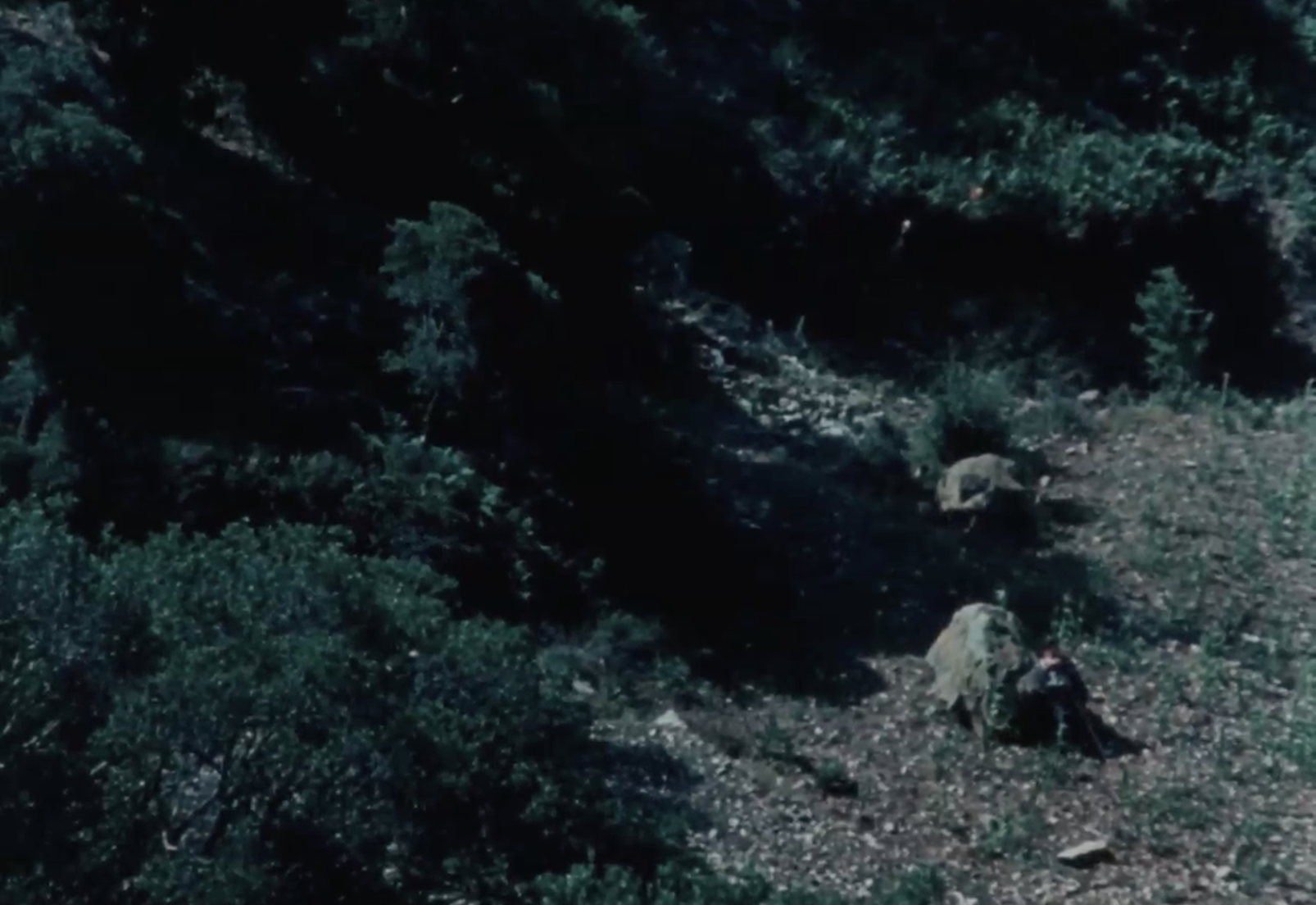
________
AMOR, 1980
‘AMOR is an exquisite lyric, shot in Rome and at the natural theatre of Salzburg. The recurring sounds of cutting cloth, hands clapping, hammering, and tapping underline the associations of the montage of short camera movements, which bring together the making of a suit, the restoration of a building, and details of a figure, presumably Beavers himself, standing in the natural theatre in a new suit, making a series of hand movements and gestures. A handsomely designed Italian banknote suggests the aesthetic economy of the film: the tailoring, trimming, and chiseling point to the editing of the film itself.” — P. Adams Sitney

____________
The Hedge Theater, 1986-90
‘Some years after filming AMOR, I returned to Italy and found the source for a new film in the architecture of Borromini and in a grove of trees with empty birdcages. (A grove of trees, a rocolo, in which hunters would set out cages with decoys, called richiami, whose song attracted other birds.) The buoyant spaces of these cupolas, the sewing of a buttonhole, and the invisible bird hunt are all elements in the sustained dialogue of The Hedge Theatre.’ — RB
the entirety
____________
The Ground, 1993-2001
‘What lives in the space between the stones, in the space cupped between my hand and my chest? Filmmaker/stonemason. A tower or ruin of remembrance. With each swing of the hammer I cut into the image and the sound rises from the chisel. A rhythm, marked by repetition and animated by variation; strokes of hammer and fist, resounding in dialogue. In this space which the film creates, emptiness gains a contour strong enough for the spectator to see more than the image – a space permitting vision in addition to sight.’ — RB
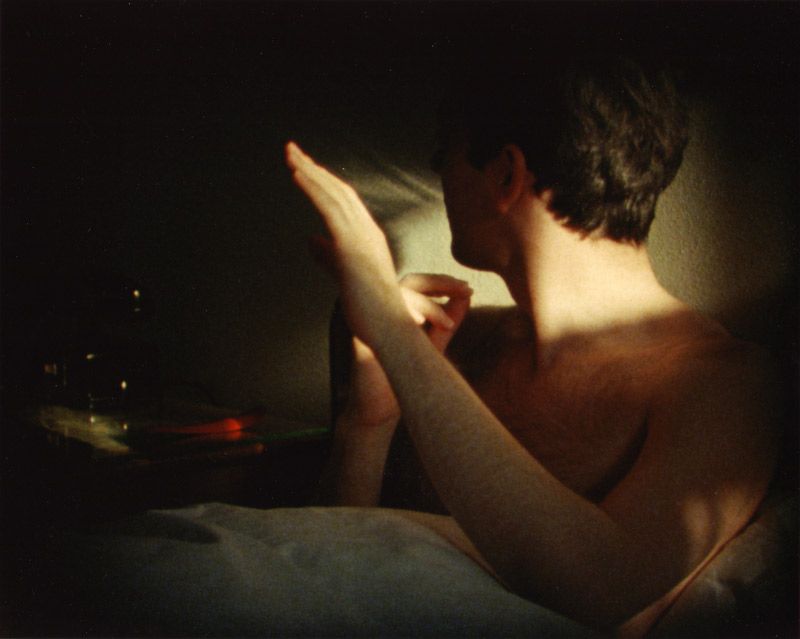
_____________
Among the Eucalyptuses, 2017
‘Late afternoon quiet and a silent figure seated on a bench in Nafplion; the historic figures of Kolokotronis and Kapodistrias; plus the old factories and machinery, warehouses and train lines that are part of a Piraeus, now disappearing.’ — RB

_____________
“Der Klang, die Welt…”, 2018
‘“Der Klang, die Welt…” was intended as a gift to my landlady Cécile Staehelin, after her husband Dieter Staehelin had died. Dieter is speaking in the film about the place of music in his life, while we see him and Cécile performing an ‘Arabesque’ by Bohuslav Martinů. She once mentioned the wish for her life to end like the last notes in this piece of music.’ — RB
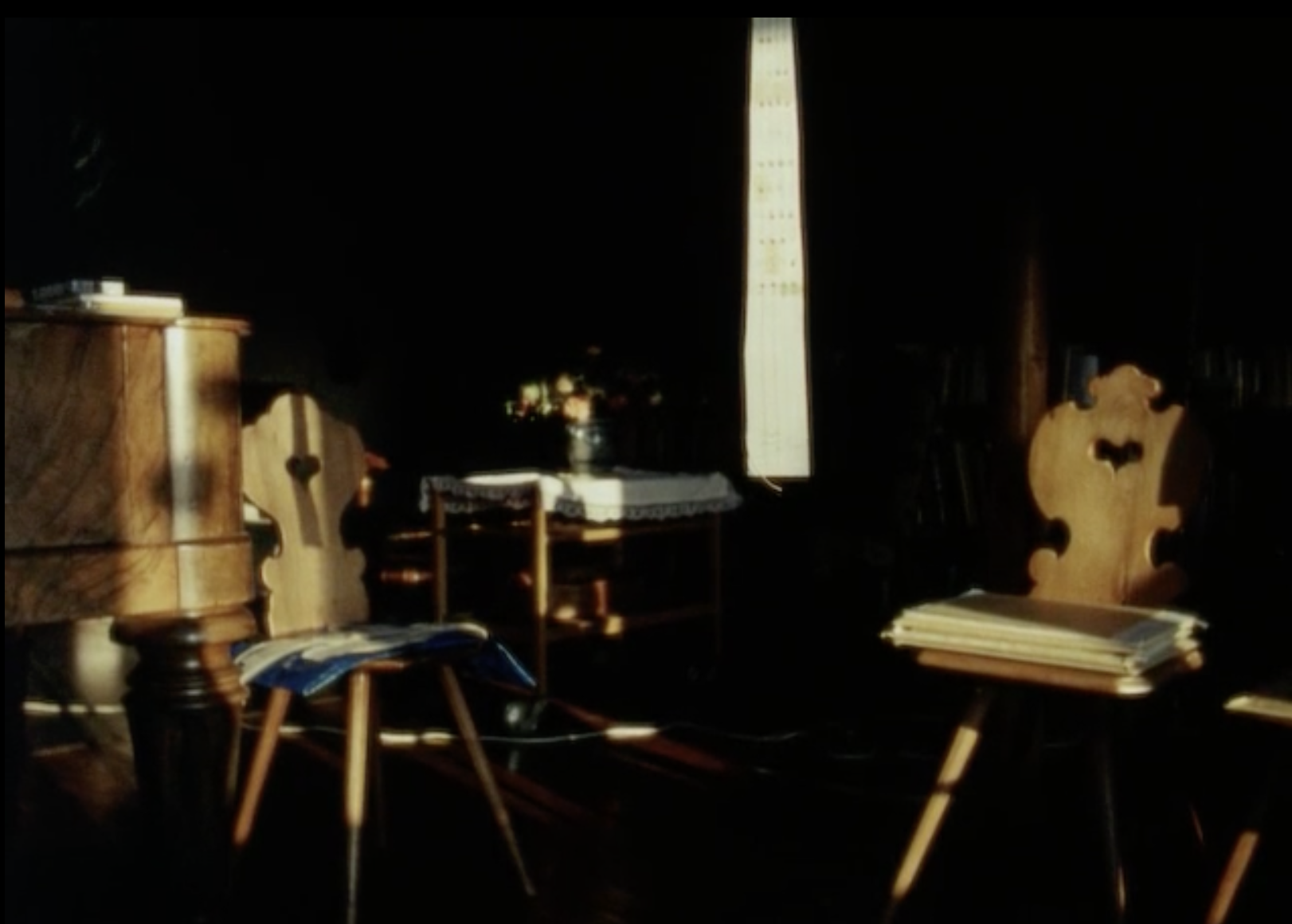
_____________
The Sparrow Dream, 2022
‘Robert Beavers, one of the most important figures of experimental cinema today, returns to the places of his memories in Berlin and Massachusetts and asks: How have the places I’ve lived affected the way I see?’ — IMDb

*
p.s. Hey. ** Mark, Mark! Before I go any further, guess what finally arrived in the mail? Oh, man, the zine is crazy great. I knew it would be cool, but it’s so brilliant and complex and beautiful. I’m completely honored and blown away. I spent hours yesterday poring over it. Thank you so much! It’s amazing. I’m flabbergasted. Wow. Otherwise, I’ll hopefully catch the Waters show in October. I saw a screening of Thom Anderson’s films in that theater, and, yeah, it’s terrific. Very cool about Mattazine Society. Nice name, obvs. I wish I could get to LA in time for the ToF shebang, but I seriously doubt it. Really, thank you ever so much for making that zine. Crazy great!!! ** Charalampos, Hi. I’m okay with snakes, as long as they don’t like me too much. My friend George Miles had a very large pet snake when he was a kid. Live cam reading, nice. Alert us when/where it is. Love from, you know, Paris. ** Misanthrope, I’m not a big crier, no. Mm, I think I have quite a number of female friends who are into fire, if memory serves. I’ve never thought of it as a male-centric interest. But my friends are unusuals, and I don’t know the numbers and all of that. I was never really a pyro or wannabe, I don’t think. Fireworks, but that’s about the show, not about the lit match. ** _Black_Acrylic, Oh, yes, I remember that fire and the ugly response. Anti-contemporary art people are so boring. I’m glad you’re feeling better, and I hope it’s a trend, a longterm trend. I’ll take a look at that book you liked. ** 2Moody, Congrats on the closing the book on the marathon. I can’t think of any preparatory films that would lead you smoothly into ‘PGL’. It’s nothing like Almodovar, that’s for sure. It’s quiet, what the characters say is important, I don’t know. Here’s hoping it sits well with you, but, if it doesn’t, no big. Extreme suckage about your heat’s return. I think we’re safely into the fall’s long haul, but the weather is into shocking the world these days. It’s gotta cool down there soon, right? It’s almost October. Although LA is still in its summer mode in October nowadays. Oh god. Tik-Tak, not by name. But I can not do rides that spin and revolve. I get nauseous within half a second. There was a ride at Tivoli about Hans Christian Anderson that I remember really liking even though I think it was kind of dorky. Mr. Toad’s Wild Ride is in the running for my favorite thing in the world. Not just favorite rides, favorite things. I think children’s dark rides have been dark for as long as I can remember. Even the Peter Pan one at Disneyland is a little dark. And It’s A Small World is creepy, evil dark. I’m getting the baby thing a little yeah, ha ha. But that’s okay. You know they’re re-theming Splash Mountain right now to be, like, post-racist. But, yeah, dark rides … I feel gooey just thinking about them. Your thoughts rule. xo. ** _ollie_ :)), Hey, O. I’m at attention, yes. Great that Spirit Halloween’s open! Halloween is real! I’m starting my blog’s annual Halloween themed countdown on Saturday. I don’t think I’ll get to your part of the world, but I’d buy an armload of something just so you could check me out. ‘Miss’ is such a Southern misgendering tool. Isn’t it? Maybe not. Height is way overrated. Take it from a tall guy. Um, I must join your alarmed friend in dissuading you strongly from performing self-surgery. Not a good idea. Seriously. My day was a day off, so I just did nothing and caught up and blah blah. I honestly don’t remember what my favorite thing was at the Vrolijk. It was, like, 1984 when I was there. It’s cool generally. Peppa Pig Playhouse wasn’t even a molecule at that point. But I can see the Dutch wanting one of those things somehow. Pineapple, nice. It kind of makes the roof of my mouth swell up a little bit, but it’s worth it. ** John Newton, Hi. Oh, hm, I can’t remember what smoke + Santa Anas was like. It’s been a while. I’m blanking on other famous hustler bar attendees. I saw most of the famous ones in at the ‘classy’ hustler bar in LA. Warhol, no. I don’t remember Ray Bolger dying of HIV, but I can’t say for sure. I think he was pretty old when he died. Secret HIV deaths … hm, I don’t know. Freddie Mercury, … I forget. There have been famous people who didn’t die of HIV that rumor-mongers like to say did. I don’t remember anyone named Hyman, no. Which isn’t to say I didn’t possibly meet him. I didn’t know James Robert Baker all that well, but he seemed like a tortured, dark person. He was very bitter that his books weren’t more successful. I don’t remember him seeming like he did hard drugs, but I don’t know. My mom watched soaps all the time. I think ‘As The World Turns’ was her favorite. The French seen to like talk/entertainment TV shows. There are tons of them. ** Kyler, Hi, Kyler. Thanks, man. I wouldn’t be surprised if we invisibly crossed paths at the Ninth Circle. Too bad there weren’t surveillance cameras everywhere back then because we could scan through the footage and find out. Hope you’re doing great. ** Okay. D.l. Corey recently attended a retrospective of Robert Beavers films, and his mentioning that fact got me to make a Day for RB. I’m guessing most of you don’t know his films or maybe even of his films. In which case, today is your chance. See you tomorrow.




 Now available in North America
Now available in North America 
Thank you for this intro to the work of Mr Beavers! Nothing available for DVD rental, but after seeing the work that’s not such a surprise. I value this space for showing experimental cinema.
Robery Beaveers and Gregory Markopoulos were am alliance of Love and Ar t dating from 1966 60 Markopoulos’death whose date forget. Google “Temenos” for more information.
Eros O Basileus
Twice a Man”
Thanks David!
Only 2 days till your deadline! How’s the color grading proceeding?
Beavers and Markopolous’ films both seem rather insular and hermetic to me. I’ve never been able to find an entry point to appreciate them.
New York Film Festival press screenings begin tomorrow. (Andrew Haigh’s ALL OF US STRANGERS will be the first film I watch there, followed by Paul Preciado’s ORLANDO, MY POLITICAL BIOGRAPHY.) I’ve already seen Pierre Creton’s A PRINCE. Do you know Creton’s work? His interest in gay life in rural France, where he still makes a living working in agriculture, feels pretty unusual, and A PRINCE isn’t entirely successful, but it stands out.
I’ve had several music pieces published this week: my September roundup for Gay City News, on Jlin and the Brothers Osborne (https://gaycitynews.com/september-lgbtq-music-brothers-osborne-jlin/), and a review of underscores’ WALLSOCKET: https://www.slantmagazine.com/music/underscores-wallsocket-album-review/
Thanks!
Hi Dennis, Jose here co creator of the DC fan zine with Mark 🙂 He just told me you received it and I couldn’t be happier! It took us five whole weeks to create this one and we now only have less than three to make two more in time for the ToFF festival in Oct. I’m so pleased that you enjoyed the zine and I have been a big fan of yours since I was a teenager so thank you! Mark and I went to watch the new restorations of Gregg Araki’s Teen Apocalypse trilogy over the weekend and we got to meet Gregg (who sends his love)! Was awesome seeing them on a big screen and I hope that the new 4k of Nowhere makes it to you in Paris, it is a must see!
Added a few Beavers films to my watchlist now, thank you kindly! I’m convinced I have a special power where when I complain about something openly, the problem vanishes within the next 24 hours. It stormed yesterday all through the night, and while it’s back to sunny skies again, surely that was my doing… or maybe I’m just an egomaniac.
I do adore Almodóvar but I’m pretty burnt out on bright color schemes and fast-moving/tangled-up melodrama for now, so PGL sounds like a perfect antidote. Perhaps I’ll become cinematically celibate for a few days so that the quietness and dialogue realllllly sinks in. I think it’s always a good sign when my browsing through a film’s cast mostly leads to dead ends/no other references, so I have a feeling I’m in for a magical treat.
Have you thrown up on a revolving ride before, or is it just an innate queasiness that repels you? My brother once got sick on the Teacups, arguably the most inoffensive contender, but he’d also eaten funnel cake right before like a total ride-rookie. Still, he’s scarred from that decades later. Do gravitron rides count as revolving rides? I’ve never been on one but judging by videos, I think I’d have a lot of fun with it (unless I was across from someone who’d just eaten funnel cake.) I love how Mr. Toad’s Wild Ride ends right after being sent to hell, it makes me wish I rode (had ridden?) it as a child because I’m sure my psyche would internalize that in a fun way. The Indiana Jones ride is my personal favorite because it’s like the perfect combination of everything I love in a ride and always convinces me for that glorious 10 minutes or so that I should take on off-roading. Maybe once I get my insurance stuff handled? Post-racist bahaha yes I did hear about that, gotta love Disney’s very subtle approach to making amends. The new ride sounds super cool if it’s actually anywhere near what I’ve read on little spoiler articles. New Orleans/Princess and the Frog inspired swampiness and jazz, what’s not to love? (aside from the inevitable stomach-churning drop, of course) One question I must ask following all this—are you a screamer on rides? Nowadays I’m more of a nervous-but-amused giggler, or sometimes stoic gritted-teeth silence if I’m truly startled. Oh, and how are you with haunted houses? I feel like you’d be both the worst and ideal haunted house attendee because none of the jump scares would scare/get a reaction out of you, but you’d really appreciate the artistry and details unlike the general population who’s just in it for the quick screams. Really, I think you could have a stellar side gig of being an amusement ride reviewer. xoxo
Thanks so much, to think that some casual commenting from me prompted you to do all this work!
The video of calming a hedgehog illustrates my response to Robert Beavers as cinema-healer. At first I bristled at the preciousness but it ends up working in mysterious ways.
https://www.youtube.com/watch?v=q9sndZ8vioY&ab_channel=MrHedgie
Your point about June in Greece is duly taken. If it’s any consolation, the village where you stay is at altitude and the screenings are at night and at higher altitude, to the point of getting chilly. There is no programming during the day. Almost everyone just spends all day hanging out in the village, napping, sitting at the taverna, and strolling through the fields a bit, so there’s never any reason to exert yourself in the heat.
I’m getting back into my regular Tel Aviv routine after I was mostly away for a month. Still the same good but time-consuming computer day job, trying to be more outgoing and flirtatious, apartment/roof improvements, writing in English and Hebrew, tinkering with my phone’s video camera and figuring out how to edit together the results. There’s a new light rail line that’s partly a subway so that’s exciting.
Today I ran into a student radical who’s the unofficial leader of our protest cadre. A few months ago he was the most adamant about finding ways around police defenses so we could block the highway. No he’s feeling calm and thinks the government will collapse before it can do constitutional damage. I hope he’s right.
You’re inspiring me to start playing with self-imposed semi-arbitrary deadlines as a motivator even though I’ve had bad experiences with deadlines. Is your deadline this week to totally finish everything, or do you just want a presentable cut to meet some deadline?
So glad you got our zine and are enjoying it. It’s selling well. We might have to reprint it – a good problem to have! We have the zine for sale and can be contacted at 4theloveofzine@gmail.com or on instagram at @mattazine_society. Hopefully it will soon be available through Printed Matter. We start shooting the Christopher Harrity/Stroke Magazine documentary this weekend. I’m super excited about it. Friday we are going to see a screening of short films by Mike and George Kuchar at the Academy Museum. We met Mike several months ago during his drawing exhibition here in LA. We are psyched to see these films on the big screen. Hopefully you’ll make it to LA this fall. <3